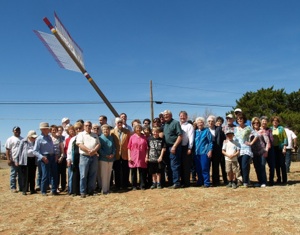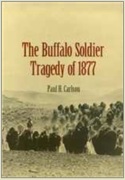Morton, Texas



QUANAH PARKER TRAIL







Nolan Expedition:
Legend and Fact ...






Morton



H. HUMPHRIES ©2013
CROWD GATHERS IN MORTON IN 2013
TO CELEBRATE ARROW INSTALLATION



In July 1877, the Nolan Expedition, a Buffalo Soldier contingent, crossed Cochran County in search of warring Indians who had departed Fort Sill. Some accounts report Chief Black Horse was the leader. Not so. He was incarcerated in Florida at the time.
The U. S. Cavalry engaged the Indians in the Battle of Yellow House Draw in March. Called the Staked Plains War, hostilities didn't end till summer. Quanah Parker, sent from Fort Sill, met with the off-reservation Indians in the Blue Sand Hills to persuade them to return to Fort Sill. Quanah also met with buffalo hunters and the U. S. Calvary, careful not to reveal the location of the errant Indians.
Some of the wandering Cavalry died of thirst, a tragic chapter indeed in the story of the Buffalo Soldiers.
Sulphur Draw cuts to the southeast across present-day Cochran County and extends over 50 miles to join Lost Draw. Springs around Sulphur Draw made it a favorite place for the Comanche. Indian artifacts have been found in Suphur Draw, confirming it as a waterway followed by tribes that roamed the Plains. If 1877 had not been a drought year, the Buffalo Soldiers would likely have found lifesaving water on their trek.
In 1876, Cochran County became the last county to be established by the state legislature. Cochran County calls itself the state’s Last Frontier.
The Indians, plus wives and children, had been allowed leave the Fort Sill Reservation in December 1876, to hunt game to supplement meager rations. Reportedly it was the sight of buffalo hunters decimating the remaining herds that prompted the Indians to take up war again and to attack hunters’ camps.









